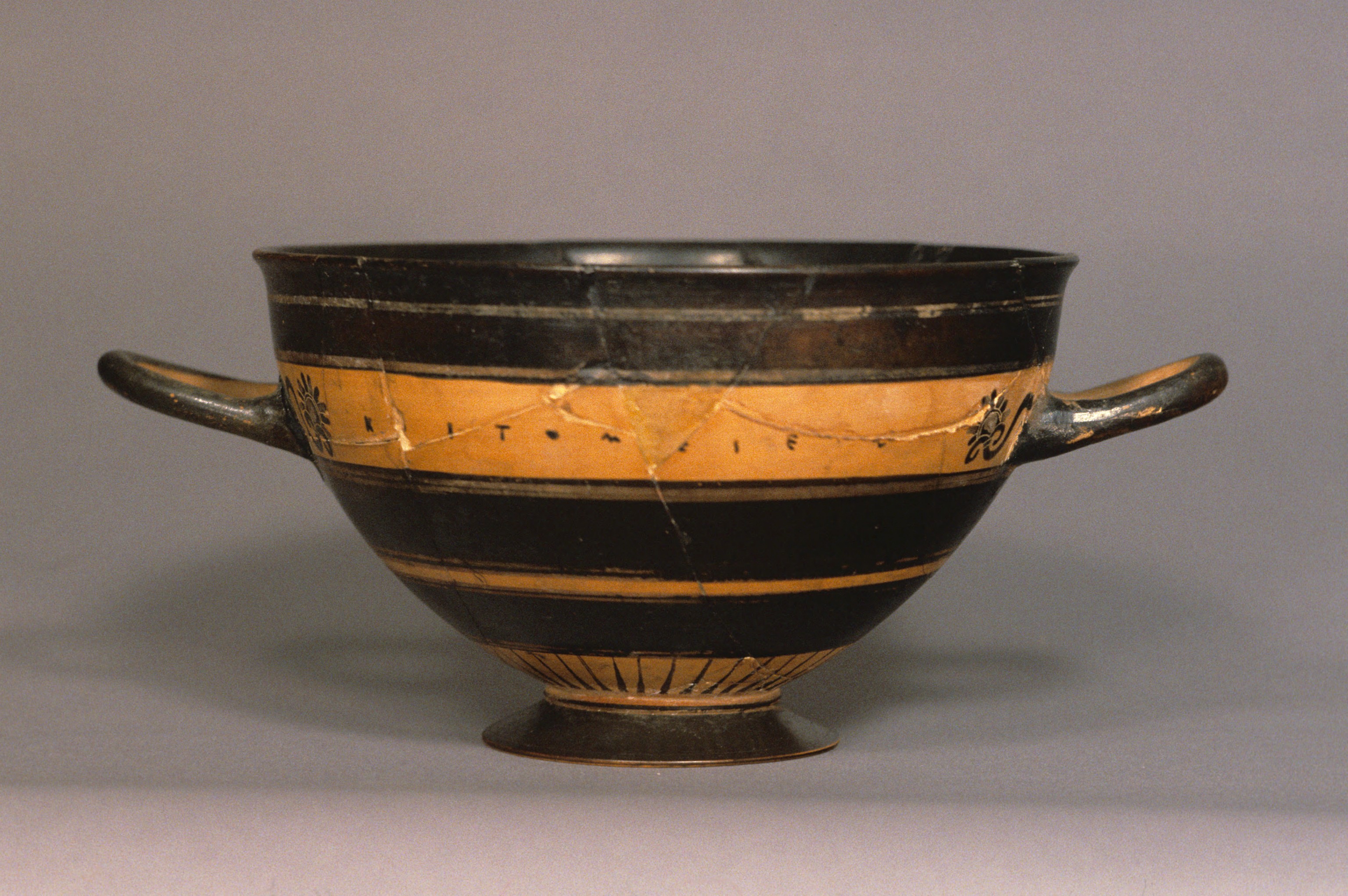Attic Black Figure Skyphos
- Dönem
- ca. 550 BC, Lidya
- Sardeis veya Müze Env. No.
- Princeton 29-180
- Malzeme
- Pişmiş toprak
- Eserin Türü
- Seramik
- Seramiğin Şekli
- Skyphos
- Seramik Mal Grubu
- Attika Siyah Figür
- Pottery Attribution
- Yerleşim
- Sardis
- Alan (Sektör)
- Nec
- Açma
- Butler Tomb 720
- Locus
- Butler Tomb 720
- Bulunduğu Yeri
- Necropolis, Tomb 720.
- Tanım
Complete except for a few small parts of the bowl and rim. Repaired from many fragments. Exterior: the handle zone, a narrow band at the midpoint between the handle zone and the base, and a zone at base on which rays are painted are all reserved. Above the handle zone, two narrow red-painted bands (the one at lip subdivided into two bands); below the handle zone, four narrow red bands (again, the top and bottom bands are subdivided). In the handle zone, a palmette on each side of both handles and a painted inscription: ΚΛΑΙΤΟΜΕΝΕΣ ΕΠΟΙΕΣΕΝ. Palmette flowers have a red blob in the center and on alternate petals. Flower rests on volute at end of tendril. Fillet at join of the foot is black, with a red band above and below. The foot is black
Interior: reserved tondo with goose walking to right on a thin curved baseline. Red on the forepart and middle "stripe" of the wing. Incision defines the eye and inner end of the bill and jaw. Three short lines at the top and bottom of the head between the eye and jaw contour. Five short lines on the chest. Incision also for the tail feathers, long feathers on back, and top of the legs. Glaze has misfired on the neck, back part of wing, lower body, and top of the right leg. Surrounding the tondo, two closely spaced narrow bands in red. On rest of the bowl, four narrow, evenly spaced red bands. Resting surface of the foot reserved with a pair of narrow red bands near the outside and inside edges. Black glaze on the inside wall of the foot; two red bands on the recessed bottom, and black on the button at the center. Clay is reddish brown, inside and out, including the underside of the foot.
By the potter Kleitomenes (ABV 167) or Klitomenes (Paralipomena 69); but D. von Bothmer says the second letter is not lambda and reads Kritomenes (according to C.H. Greenewalt, Jr., personal communication). Smith, “Skyphos of Klitomenes,” 437, no. 1, allowed the possibility of a rho.
- Boyutlar
- H. 0.107; diam. of rim 0.178.
- Yorum
- Ayrıca bakınız
- Kaynakça
- Published, in addition to references above: H.R. W Smith,"The Museum of Historic Art: Greek Vases," Art and Archaeology 20 (1925) 120; H. Bloesch, “Variaten” in Gestalt und Geschichte. Festschrift Karl Schefold, AntK-BH 4 (1967) 84, n. 5; H. Mommsen, Der Affecter (Mainz 1975) 47, n. 242. Despite H.R.W. Smith’s claim (Smith, “Skyphos of Klitomenes,” 432) that the provenance is not known, Chase, “Field Notes” make it clear that the skyphos came from Tomb 720.
- Yazar
- NHR


